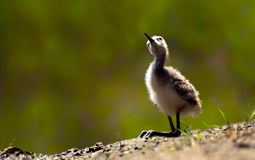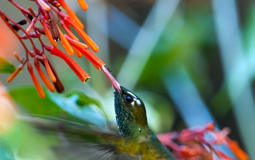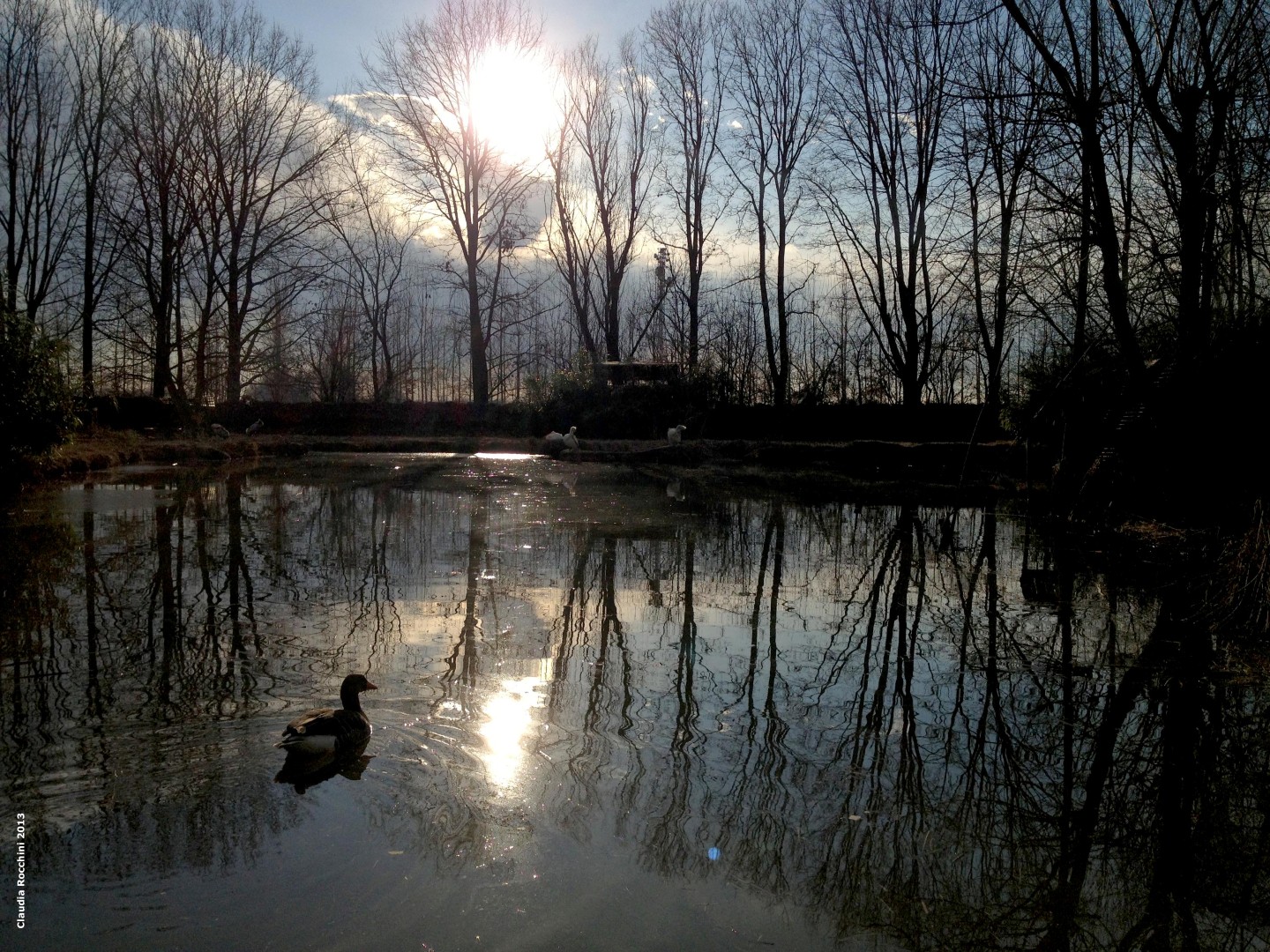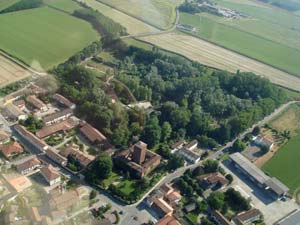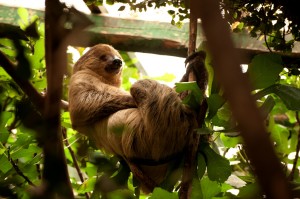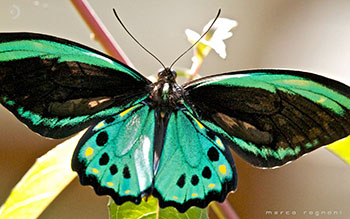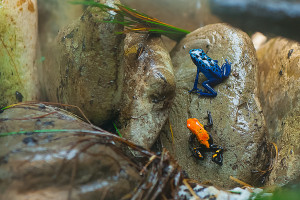
Sant’Alessio Oasis
This post is also available in:
 Italiano (Italian)
Italiano (Italian)
Sant’Alessio Oasis is in the park surrounding the Castle of Sant’Alessio. In the XV century, the latter was the residence of the Beccaria nobles who probably used it as a hunting lodge because of its proximity to the Visconteo Park (1365 – c. 1525); that was the first park built in modern Europe, for hunting and the court delight. After the Battle of Pavia, fought within its borders, and the end of the domination of the Sforza dynasty, the park was abandoned.
The massive walls that enclosed it served as a brick quarry for the villages that, over time, were built on the premises. Today, with the exception of what remains of the so-called Mirabello Castle – which is actually a villa – there are hardly any visible traces of the ancient park.
In 1973, Antonia and Harry Salamon purchased the Castle of Sant’Alessio and the little land that surrounded it. Their aim was to breed and reintroduce endangered animal species into the wild. Those were the years when the Peregrine Falcons were disappearing from Europe and North America: it was thought that that species was threatened of extinction (while the birds were actually moving elsewhere, according to recurring migration patterns). To make things worse, white storks had been missing for five centuries and the few specimens migrating through our country had ended up embalmed by some unscrupulous hunters.
The Salomons thus began to dedicate themselves to the breeding of these species, with great success. In 1983, the Province of Pavia, in the person of Environment Counselor Roberto Gatti, protected the whole state with a 248-acre containment belt, soon to reach 300, although later shrunk to mere 30.
Over time, the project has evolved and the Oasis has ended up not only resembling what the Visconti Park used to be but mostly an avant-garde breeding center, renown throughout Europe.
In 1993, it was transformed into a service facility and opened to the public. A system of protected and hidden structures was created to let visitors visitor approach and observe the wild nature; a model garden was built as well, blending the wild American landscapes created by Wolfgang Oehme and James van Sweden, with the “cage without bars” idea by Tony Soper. This very endeavor resulted in a place that allows nature lovers to get up close and personal with some of its most secret phenomena. No particular training or skills are required to silently and respectfully join and observe free-roaming wild animals.
THE ACTIVITIES
Today, this oasis has managed to breed and reintroduce in their natural habitat many interesting species, like peregrine falcons, white storks, black-winged stilts, Eurasian spoonbills, glossy ibis, red squirrels (the autochthonous species in Europe), Eurasian hoopoes, common kingfishers, kestrels, and little grebes; pied avocets and lanner falcons are about to be just as successfully reintroduced.
There are also many varieties of ducks like the Ferruginous ones, smews, codons, garganeys, and Eurasian teals (they live in a semi-wild state).
There was also a breeding center for butterflies and hummingbirds: between the greenhouse, populated by hundreds of tropical plants, and a large aviary, visitors can you see small birds flying from flower to flower, in search of nectar, as well as lepidoptera species from Costa Rica and Australia, such as the Morpho, the small but lively Heliconia, the famous Monarch, capable of migrating from Canada to Mexico, and various Papilionidae species.
From Australia, there are wondrous Ornithopters with emerald green wings and the beautiful Ulysses variety. In the greenhouse, several Caligo butterflies are also bred and studied – in South America, their caterpillars can literally destroy banana crops in the blink of an eye.
The Salomons, however, have discovered that they prefer plants similar to the banana tree, in particular, strelitzia and heliconia species: they are currently studying the possibility of planting them in hedges along with the banana crops, to attract Caligo butterflies and thus limit the use of pesticides in the cultivation of bananas. Those very chemical compounds are the main cause of the loss of the coral reef on the Caribbean coast of Central America.
Over time, the Oasis has been enriched with many other particular environments, dedicated to plants and animals from all over the world. They are divided into two sectors: European and tropical.
THE EUROPEAN SECTOR
It features the painstaking reconstruction of the wetlands of southern Europe, inspired in part by the lost Pontine marshes. It develops around a forest, created in forty years, and allowed to naturally evolve. It includes ponds, grasslands, reeds, woods, large trees, fallen trunks growing ferns, mosses, and lichens. There, many animals can be found, including roe deers, wild ducks, spontaneous birds, and fish; herons migrating back from Africa have nestled here as well.
Then, there are cranes, flamingos, grey herons, white storks, spoonbills, glossy ibis, black-winged stilts, pond turtles, and red squirrels.
Some aviaries have been built to take care of pied avocets, oystercatchers, hoopoes, Europen bee-eaters, woodpeckers, Eurasian golden orioles, common kingfishers, northern goshawks, and sparrow hawks.
A special enclosure has been built for young otters still learning to swim. Finally, a trail suspended over the water allows visitors to observe the life of diving ducks, giant carps, sturgeons, and otters, both underwater and above.
THE TROPICAL SECTOR
It features several aquariums and terrariums for reptiles. The first terrarium is dedicated to Amazonian poison dart frogs, colorful and toxic; two other aquariums house Altum angelfish and Discus fish, also from the Amazon. Other similar facilities feature several species particularly useful for understanding evolutionary phenomena: Anableps (four-eyed fish) and Periophthalmus (mudskippers) species, horseshoe crabs, other animals similar to spiders that look like crustaceans, and fish that can live for years without water. There are also turtles and ocellated lizards, a European species that can reach a length of 3.2 ft, and some tree frogs (Agalychnis), the red-eyed amphibians born in the Oasis.
Reptile terrariums also include large beetles (Southamerican Dynastes), leaf and insects, European mantis, and leaf-cutting Atta ants (which live in the most complex type of animal society).
In the main greenhouse, tropical plant species related to food and human economy are abundant, such as the bread tree, the cocoa tree, the clove tree, and many others, loaded with epiphytic species like orchids, ferns, and Bromeliads.
In the pond, there is a huge electric eel (Gymonuts) – the species which allegedly inspired Alessandro Volta’s first-ever electric battery – and some bony tongues (Arowana fish species), which can leap 4 ft out of the water’s surface to catch their prey on overhanging leaves and branches. Then, there are freshwater stingrays, quite popular in the Amazon habitat.
Not to mention piranhas, dwarf caimans, longnose gars from the Mississippi River, and anacondas.
Green tree pythons from Australia and New Guinea, along with the emerald tree boas thrive in some other terrariums, while a thicket of mangroves can be found in the saltwater wetland.
Archerfish, which can bring down insects by spitting up to 10 ft above the water’s surface, are abundant in another pond.
In the aviary of the Birds of Paradise, there is a family of king bird-of-paradise (Cicinnurus regius), and in another pond, there are some Cuban flamingos, with pink, magenta and red plumages.
This post is also available in:
 Italiano (Italian)
Italiano (Italian)
Contatti
Castello di Sant’Alessio, Sant’Alessio con Vialone - 27016 Sant'Alessio con Vialone(PV)
0382 94139
http://www.oasisantalessio.org
Altre info
Adulti: € 13 Ridotti: bambini dai 3 ai 12 anni: € 10 Portatori di handicap in carrozzella: € 10 Accompagnatori di portatori di handicap in carrozzella: gratuiti Anziani giorni feriali (da lunedì a sabato): € 10
Da febbraio a novembre
Variabile a seconda del mese; l'ultimo ingresso è un'ora prima dalla chiusura. Portatori di handicap: l’Oasi è un parco naturalistico che può porre delle limitazioni. Suggeriamo di informarvi telefonicamente sulla percorribilità . Nell’Oasi non sono ammessi animali domestici, va vi sono spaziosi box all’aperto per cani.
